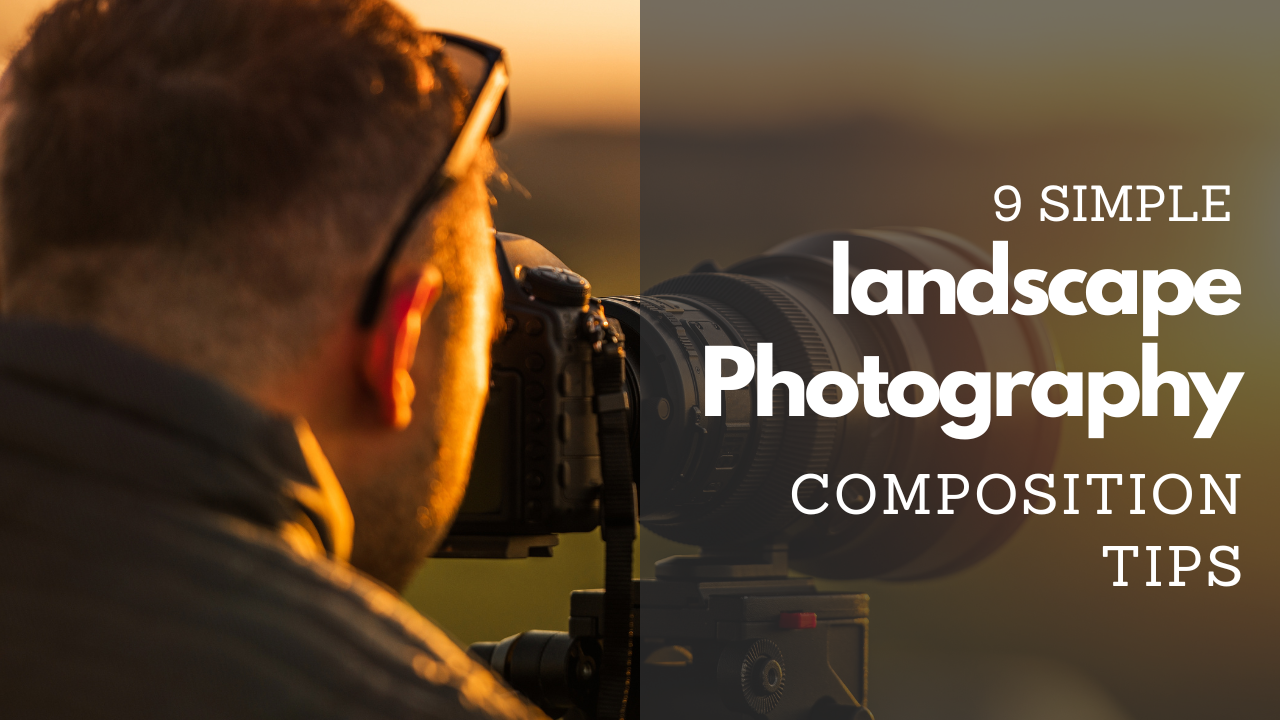9 simple Landscape Photography Composition Tips

Composition is one of the most important aspects of landscape photography. It's not just about capturing a breathtaking view, but also knowing how to properly frame it so that it stands out and speaks to your audience. Working on your composition can be challenging, as there are many elements involved in creating an eye-catching image. However, with these nine simple tips, you'll have all the tools you need to create beautiful landscape photos that will draw attention from viewers! With practice and dedication, anyone can become a master at composition for landscape photography!
Use the rule of thirds
This is a simple yet powerful composition tool and it’s the first one that you should master. The goal of the rule of thirds is to divide your image into nine equal parts by using two horizontal lines and two vertical lines. Placing your main subject at either one of the four intersections will help create visual interest, balance, and harmony in the image.

Make sure you have a strong foreground
The foreground of your image is the part that’s closest to you and when using this technique, it should draw attention to the rest of the scene. You can use a wide-angle lens or a telephoto lens depending on what kind of effect you want to create, but make sure to get up close and personal! This will help add depth and dimension to your shot.
Look for leading lines
Leading lines are a great way to capture the viewer’s attention and direct it towards the main subject of your photo. Examples of leading lines include roads, rivers, fence lines, railroad tracks or any other line that moves through the frame.

Experiment with perspectives
By changing your angle of view or shooting from a different perspective you can create a more dynamic image. Try to think outside the box and look for other ways to capture the same subject. You’d be surprised at what kind of new and interesting images you can come up with just by changing your point of view.
Minimize distractions
Be aware of what’s in the frame of your image and make sure that it doesn’t have anything distracting. To do this, look for elements like power lines, ugly buildings or any other object that takes away from the beauty of the scene.
Include some human elements
Adding a human element to your landscape photos can create a sense of scale and provide context to the image. It can also help create an emotional connection with the viewer by showing them how small they are in relation to the vastness of nature.
Look for patterns
Patterns, such as clouds or reeds in a lake, can add visual interest to your photos. Look around for different textures, lines, shapes and colours that you can incorporate into your composition.
Zoom in or out
Sometimes less is more and this applies to composition as well. So, don’t be afraid to zoom in or out if you feel like it would better frame your shot. This can help add more drama or even create a sense of mystery.
Try a Panoramic Image
When the scene is too big to fit into one frame, try stitching multiple photos together to create a panoramic image. This can be a great way to capture all of the details in the landscape and it’s sure to make an impact on your viewers.

By following these nine tips, you'll be well on your way to creating stunning landscape photos. Don't forget to experiment and have fun! With practice and dedication, you can become a master in no time! Happy shooting!
Download your free landscape photography composition checklist
I have created a simple and effective checklist you can use when setting up your composition. It will help you improve your composition. Click Here to download it now.
Download your free copy of my Landscape Photography Camera Setup Checklist
Even the most experienced photographers can ruin a photo with one small mistake. You spend all that time setting up your tripod and camera, but forget to check one thing and the photo is ruined.


